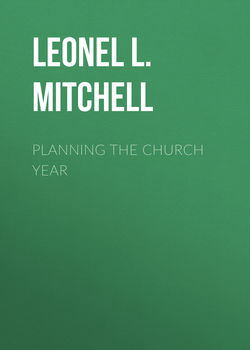Читать книгу Planning the Church Year - Leonel L. Mitchell - Страница 13
На сайте Литреса книга снята с продажи.
The Liturgical Year
ОглавлениеThe liturgical year and its accompanying lectionary is, of course, a major resource for planning. The lectionary was compiled with a clear purpose in view: to proclaim the Paschal mystery of the death and resurrection of Jesus Christ and our participation in those mighty events. In making this choice, the lectionary committee was faithful to the underlying nature of the liturgical year. Neither the lectionary nor the liturgical year is a lesson plan for teaching systematic theology, Bible stories, or even the “history of salvation.” The purpose is to proclaim and draw us into the saving events of the death, resurrection, and ascension of Jesus Christ and our participation in them through faith and in baptism, so that the victory that has been won in Christ is being won by him in us.
Marianne Micks, in The Future Present, distinguishes between what she calls a “tourist view” of the Church Year, which takes us on a guided walk through the Holy Land with Jesus, and the mysteriological, or traditional, view that in a real sense we participate in the events we celebrate. “This is the night,” we proclaim in the Easter Vigil, “when all who believe in Christ are delivered from the gloom of sin, and are restored to grace and holiness of life. This is the night when Christ broke the bonds of death and hell, and rose victorious from the grave.” It is more than a convenient occasion to preach about the resurrection, “This is the night!”
Sunday as the Lord’s Day; Lent, Holy Week, and Easter as the core of the liturgical year; proclamation of the good news that God in Christ “has visited and redeemed his people” as the primary content of our preaching—these are the core of this celebration. They are what constitute the liturgical year as it has been celebrated in the Church from the patristic age.
If we are going to plan the year in accordance with its own principles of development, we need to think of it as falling into two cycles. The first is the Lent-Easter-Pentecost cycle. This has as its core the celebration of the Great Vigil and our Lord’s “passover” from death to life. The central theme, not only of the Vigil but of the Christian year, is our passage with Christ through the grave to the risen life, celebrated in baptism, in eucharist, and in the Easter festival. The theme is extended throughout the eight days of Holy Week, beginning with the passion narrative on Palm Sunday and especially in the liturgies of Maundy Thursday and Good Friday. The Great Fifty Days, the period from Easter to Pentecost, with its first readings from Acts and its Gospel readings from the Fourth Gospel, give us the opportunity to celebrate the resurrection begun in Christ, continued in the life of the apostolic church, and working still in us. It encompasses Ascension Day and the Day of Pentecost, which are parts of the whole seasonal celebration. Finally, all of this is introduced by the Lenten fast. Here the Sunday Gospels give us the themes.
The second cycle is Advent-Christmas-Epiphany. This is not a different celebration from the older Easter cycle but a different look at the same mystery. The twelve-day Christmas-Epiphany celebration of the Incarnation and manifestation of Christ (“The Word became flesh and dwelt among us; and we have beheld the glory”) leads into the Baptism of Our Lord and our participation in his divine life. The Christ who died and rose again for us took flesh of the Virgin “for us and for our salvation.” From the Second Sunday in Advent through the Baptism of Our Lord, this is our theme. The nativity, the adoration of the Magi, the baptism are all ways of looking into our union with the Incarnate One.
The rest of the year, called by the original Roman Catholic compilers of the lectionary “ordinary time,” is considered by Episcopalians as two quasi-seasons: the Sundays after Epiphany and the Sundays after Pentecost. I call them quasiseasons because they are not real seasons. The weekly celebration of the resurrection on the Lord’s Day is their primary focus.
The Sundays after Epiphany are the better organized. They are framed by the Baptism of Our Lord at the beginning and the transfiguration Gospel on the last Sunday. This makes it possible to look at the Sundays as a series of “manifestations.” The much longer season after Pentecost has no organization. Trinity Sunday at its beginning and Christ the King at its end provide a sort of loose frame. Toward its end, the post-Pentecost season develops a real structure. Its theme is the Second Coming, and it finds its climax in the First Sunday of Advent of the following year. Advent 1, like all new year’s festivals, looks both forward and back. It completes the Pentecost-to-Advent transition and turns from the Second Advent to the First, modulating back into preparation for Christmas.
This is the heart of liturgical celebration, and if we begin our planning here and not with, “Can we sing my favorite hymn?” or “Shall we use incense this week?” we shall be proclaiming and celebrating the Gospel and not simply reading it. This, of course, means that celebrations need to be planned for the year, rather than one service at a time.
